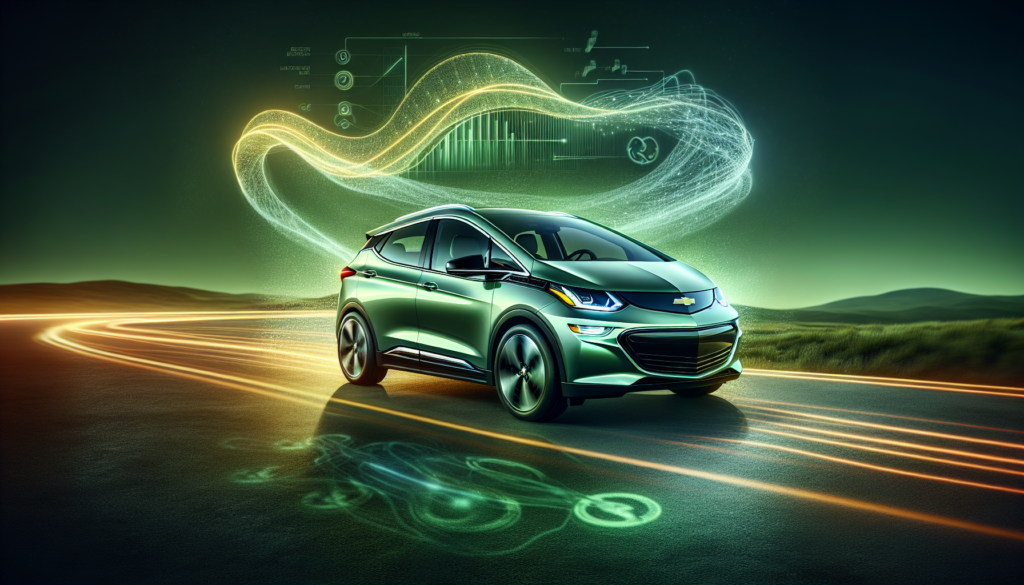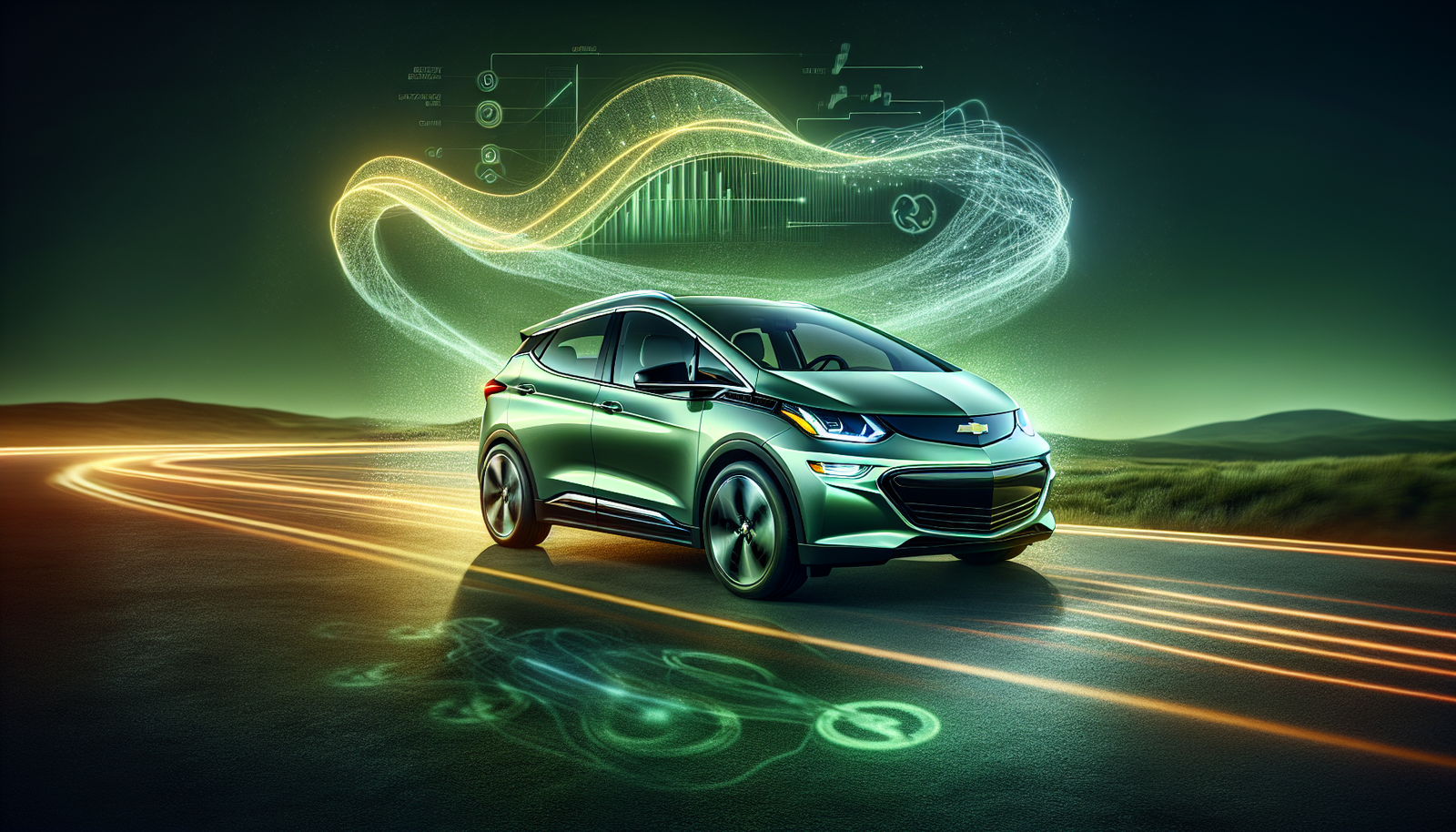In the world of electric vehicles, the Chevrolet Bolt EV stands out for its stunning range and impressive technology. But does it also come equipped with regenerative braking technology? The answer is yes. This innovative feature not only helps to extend the vehicle’s battery life, but also adds a touch of efficiency and convenience to your driving experience. But how does regenerative braking work? Let’s explore the fascinating details of this cutting-edge technology and discover how it enhances the performance of the Chevrolet Bolt EV.
Regenerative Braking Technology in the Chevrolet Bolt EV
Overview of regenerative braking
Regenerative braking technology is a key feature in the Chevrolet Bolt EV, providing a more efficient and sustainable way to slow down and stop the vehicle. Unlike traditional braking systems that rely solely on friction to slow down a vehicle, regenerative braking harnesses the kinetic energy produced during deceleration and converts it into electrical energy.
Benefits of regenerative braking
There are several benefits of regenerative braking, and these advantages are evident in the Chevrolet Bolt EV. Firstly, regenerative braking improves overall energy efficiency by utilizing the energy that would otherwise be wasted during braking. This not only reduces reliance on the vehicle’s battery for power, but also increases the electric range of the Bolt EV.
Additionally, regenerative braking helps to extend the life of the battery by reducing wear and tear on the brake pads and rotors. This can result in longer-lasting brake components and lower maintenance costs over time.
Integration of regenerative braking in the Chevrolet Bolt EV
The Chevrolet Bolt EV seamlessly integrates regenerative braking technology into its overall design and driving experience. The system is intelligently integrated with the vehicle’s electric drive unit and battery management system, allowing for efficient energy recapture and storage.
By carefully balancing the input from the accelerator pedal and the regenerative braking system, the Bolt EV provides a smooth and predictable driving experience, whether in city traffic or on the highway.
How Does Regenerative Braking Work?
Principle behind regenerative braking
Regenerative braking works on the principle of electromagnetism. When the driver releases the accelerator pedal or applies the brake, the electric motor in the Bolt EV’s drive unit switches from delivering power to the wheels to acting as a generator. This generator uses the rotational energy of the wheels to generate an electrical current.
Components involved in regenerative braking system
The regenerative braking system in the Chevrolet Bolt EV consists of several key components. These include the electric motor/generator, the power electronics module, the high-voltage battery pack, and the motor control unit. Together, these components work harmoniously to capture and store the electrical energy produced during regenerative braking.
Working mechanism of regenerative braking in the Chevrolet Bolt EV
When the driver releases the accelerator pedal, the electric motor starts functioning as a generator, converting the forward momentum of the vehicle into electrical energy. This electrical energy is then fed back into the high-voltage battery pack for later use. This process provides a smooth deceleration and helps to slow down the vehicle without the need for traditional friction brakes.
The intensity of regenerative braking can be adjusted based on the driver’s preference using different driving modes, which we will discuss in the next section.
Regenerative Braking Modes in the Chevrolet Bolt EV
One-pedal driving mode
One of the standout features of regenerative braking in the Chevrolet Bolt EV is the one-pedal driving mode. In this mode, the regenerative braking system is enhanced to such an extent that it allows the driver to control the vehicle’s speed using just the accelerator pedal. By simply releasing the pedal, the vehicle slows down significantly, almost to a complete stop, without needing to use the traditional brake pedal.
This mode not only maximizes energy recapture but also provides a unique and engaging driving experience. It allows drivers to navigate through city traffic with ease, minimizing the need for constant braking and accelerating.
Standard braking mode
In the standard braking mode, the regenerative braking system in the Bolt EV operates similarly to a traditional vehicle’s braking system. When the brake pedal is applied, hydraulic brakes are engaged, providing additional stopping power alongside the regenerative braking. This braking mode offers drivers a more familiar feel compared to traditional vehicles and is useful in situations that require quick and abrupt stops.
Regen-on-demand mode
The regen-on-demand mode in the Chevrolet Bolt EV allows the driver to manually control the intensity of regenerative braking using a paddle on the steering wheel. By pulling the paddle, the driver can increase the regenerative braking force, effectively slowing down the vehicle without using the brake pedal. Release the paddle, and the vehicle will resume coasting or accelerating, depending on the accelerator input.
This mode gives the driver greater control over the vehicle’s deceleration and further enhances energy recapture capabilities.
Efficiency and Range Improvement through Regenerative Braking
Increased overall efficiency
Regenerative braking significantly improves the overall efficiency of the Chevrolet Bolt EV. By recapturing and storing energy that would have otherwise been lost as heat through friction braking, regenerative braking reduces the reliance on the vehicle’s battery for power. This, in turn, leads to improved energy efficiency and increased driving range.
By utilizing regenerative braking, the Bolt EV can minimize energy wastage and maximize the use of available electrical energy.
Extended electric range
One of the key benefits of regenerative braking in the Chevrolet Bolt EV is its positive impact on the vehicle’s electric range. By recapturing and storing energy during deceleration, regenerative braking effectively adds extra mileage to the Bolt EV’s range. The more frequently regenerative braking is used, the more energy is recaptured, resulting in increased range.
This extended range is particularly beneficial in stop-and-go traffic or during urban driving situations where frequent deceleration and acceleration occur.
Battery life and degradation
Regenerative braking also helps to extend the life of the Bolt EV’s high-voltage battery pack. By reducing reliance on traditional braking systems, regenerative braking minimizes wear and tear on the brake pads and rotors. This leads to less frequent maintenance and replacement of brake components, reducing overall costs.
Additionally, regenerative braking optimizes the charging and discharging patterns of the battery, reducing the strain on the cells and potentially prolonging the battery’s lifespan.

Comparison with Traditional Braking Systems
Differences between regenerative and traditional braking
The primary difference between regenerative braking and traditional braking systems lies in the way they convert kinetic energy into usable energy and dissipate excess energy. Traditional braking systems rely solely on friction brakes, which convert kinetic energy into heat energy, resulting in energy loss.
Regenerative braking, on the other hand, captures and stores the energy generated during deceleration, converting it back into electrical energy. This energy can then be used to power the vehicle or recharge the battery.
Advantages and disadvantages of regenerative braking
Regenerative braking offers several advantages over traditional braking systems. Firstly, it improves energy efficiency and increases the electric range of the vehicle. It also reduces wear and tear on brake components, leading to lower maintenance costs. Regenerative braking also provides a smooth and predictable driving experience, particularly in one-pedal driving mode.
However, regenerative braking does have some limitations. It is less effective at lower speeds, and in situations that require sudden and hard stops, friction brakes may need to be engaged. Additionally, it may take some time for drivers to adjust their driving style to take full advantage of regenerative braking’s benefits.
Regenerative Braking in the Chevrolet Bolt EV: User Experience
User interface and controls
The user interface and controls for regenerative braking in the Chevrolet Bolt EV are designed to make the driving experience intuitive and user-friendly. The Bolt EV allows drivers to easily switch between different regenerative braking modes using a dedicated button on the center console. This button provides a convenient way for drivers to select their preferred braking mode, whether it be one-pedal driving, standard braking, or regen-on-demand.
Driving experience and feel
The driving experience with regenerative braking in the Chevrolet Bolt EV is smooth and seamless. The transition between regenerative and friction braking is virtually unnoticeable, providing a comfortable and natural feel to the driver. In one-pedal driving mode, the Bolt EV slows down gradually as the driver releases the accelerator pedal, giving a controlled and predictable control over the vehicle’s speed.
The regenerative braking system in the Bolt EV allows for precise and responsive control, offering a unique driving experience that enhances the overall efficiency and sustainability of the vehicle.
Impact of regenerative braking on driving style
Regenerative braking in the Chevrolet Bolt EV encourages a more economical and energy-conscious driving style. With one-pedal driving mode, drivers quickly adapt to the idea of coasting and gently releasing the accelerator pedal to slow down the vehicle. This leads to a smoother driving experience, reduced wear and tear on brake components, and enhanced energy recapture.
Drivers who embrace regenerative braking often find themselves adopting a more eco-friendly driving style, maximizing the benefits of this technology.
Regenerative Braking Maintenance and Repairs
Maintenance requirements
Regenerative braking systems, including that in the Chevrolet Bolt EV, have fewer maintenance requirements compared to traditional braking systems. The key components involved, such as the electric motor/generator and the power electronics module, are designed to be highly durable and require minimal servicing.
Regular inspections and maintenance procedures recommended by Chevrolet should be followed to ensure the proper functioning of the regenerative braking system. These may include checking the system’s electrical connections, monitoring the battery’s health, and inspecting for any signs of wear or damage.
Common issues and troubleshooting
While regenerative braking systems in the Chevrolet Bolt EV are generally reliable, there may be instances where issues arise. These can include reduced braking performance, difficulty in engaging specific braking modes, or warning lights related to the system.
In such cases, it is advisable to consult the vehicle’s owner’s manual or contact a Chevrolet service center for proper diagnosis and repairs. Regularly updating the vehicle’s software and ensuring the high-voltage battery is well-maintained can also help prevent potential issues.
Costs associated with repairs
The costs associated with repairs to the regenerative braking system in the Chevrolet Bolt EV can vary depending on the nature and extent of the issue. Basic maintenance tasks, such as inspections and software updates, are generally covered by routine servicing costs.
However, if major components, such as the electric motor/generator or power electronics module, need to be replaced, the costs can be higher. As with any vehicle repairs, it is advisable to seek professional advice and consult the vehicle’s warranty coverage to understand the potential costs associated with regenerative braking system repairs.
Future Developments in Regenerative Braking
Advancements in regenerative braking technology
As the demand for electric vehicles and sustainable transportation increases, there is ongoing research and development in regenerative braking technology. Advancements are focused on improving energy recapture efficiency, reducing system costs, and enhancing the overall driving experience.
Future developments may include the use of advanced materials in regenerative braking components, optimization of system algorithms for improved energy recapture, and integration with other advanced safety and driver-assistance features.
Integration with autonomous driving features
Regenerative braking technology has the potential to be seamlessly integrated with autonomous driving features. With the ability to accurately control the braking force and power regeneration, regenerative braking can enhance the efficiency and safety of autonomous vehicles.
By utilizing the energy recaptured during braking and deceleration, autonomous vehicles could potentially extend their electric range and reduce the reliance on external charging infrastructure.
Potential for energy recapture
Regenerative braking technology has the potential to go beyond electric vehicles and be applied in various other areas. For example, regenerative braking can be utilized in hybrid vehicles, bicycles, or even industrial equipment to harness and recapture the otherwise wasted energy during braking.
This potential for energy recapture can contribute to a more sustainable and efficient transportation ecosystem, reducing the overall carbon footprint and increasing energy efficiency.
Conclusion
In conclusion, regenerative braking technology in the Chevrolet Bolt EV offers significant benefits in terms of energy efficiency, extended electric range, and enhanced driving experience. By harnessing the kinetic energy produced during deceleration and converting it into electrical energy, the Bolt EV maximizes energy recapture and reduces reliance on traditional braking systems.
The integration of regenerative braking seamlessly into the user interface and controls of the Bolt EV ensures a friendly and intuitive driving experience. Whether it’s through the innovative one-pedal driving mode, standard braking mode, or regen-on-demand mode, the Bolt EV allows drivers to tailor their braking experience according to their needs and preferences.
While regenerative braking has numerous advantages, it is important to understand its differences from traditional braking systems and acknowledge its limitations. Adjusting one’s driving style to take full advantage of regenerative braking may take some time, but the benefits in terms of increased efficiency and reduced maintenance costs are well worth it.
The future of regenerative braking technology looks promising, with ongoing advancements and integration with autonomous driving features. This technology has the potential to revolutionize the way we think about braking and energy recapture in transportation, paving the way for a more sustainable and efficient future.

